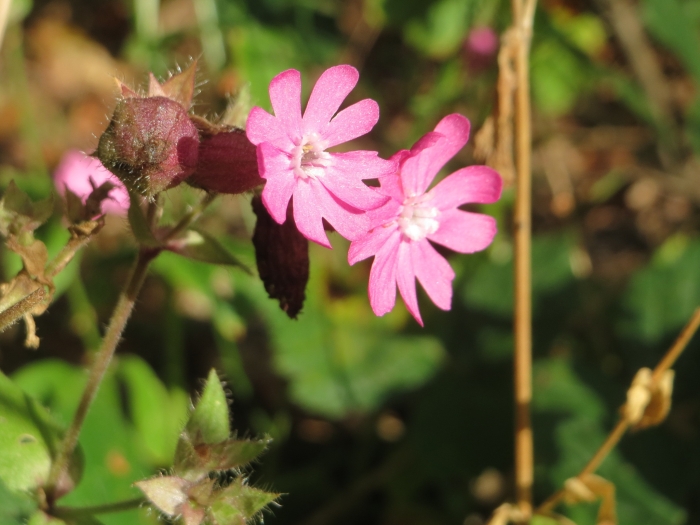Red Campion
(Silene dioica)
Red Campion (Silene dioica)
/
/

Andreas Rockstein
CC BY-SA 4.0
Image By:
Andreas Rockstein
Recorded By:
Copyright:
CC BY-SA 4.0
Copyright Notice:
Photo by: Andreas Rockstein | License Type: CC BY-SA 4.0 | License URL: http://creativecommons.org/licenses/by-sa/4.0/ | Rights Holder: Andreas Rockstein | Publisher: iNaturalist | Date Created: 2017-10-06T17:03:54-07:00 |

























Estimated Native Range
Summary
Silene dioica, commonly known as Red Campion, is a biennial or short-lived perennial herb that is native to a variety of habitats across Europe, including open woodlands, forest edges, meadows, and hedgerows. It has been introduced to parts of the Americas. This species typically grows to a height of 12-35 inches (30-90 cm) and features hairy, sticky stems. Its dark pink to red flowers are dioecious, with male and female flowers on separate plants, blooming profusely from May to October. The flowers are showy and attract a range of pollinators such as flies, bumblebees, and butterflies.
Red Campion is valued for its extended flowering period and vibrant flower color, making it a popular choice for naturalistic plantings, woodland gardens, and informal borders. It thrives in partial shade to full sun, prefers moist, well-drained soils, and is relatively easy to maintain. The ’Firefly’ cultivar is notable for its double flowers, offering a more ornamental appeal. While generally disease-resistant, Red Campion can be affected by anther-smut fungus, which causes the anthers to turn black and can reduce seed production. It is not known for aggressive roots or other significant problems in the garden. However, gardeners should be aware that it can self-seed and spread if conditions are favorable, potentially becoming weedy in some areas.CC BY-SA 4.0
Red Campion is valued for its extended flowering period and vibrant flower color, making it a popular choice for naturalistic plantings, woodland gardens, and informal borders. It thrives in partial shade to full sun, prefers moist, well-drained soils, and is relatively easy to maintain. The ’Firefly’ cultivar is notable for its double flowers, offering a more ornamental appeal. While generally disease-resistant, Red Campion can be affected by anther-smut fungus, which causes the anthers to turn black and can reduce seed production. It is not known for aggressive roots or other significant problems in the garden. However, gardeners should be aware that it can self-seed and spread if conditions are favorable, potentially becoming weedy in some areas.CC BY-SA 4.0
Plant Description
- Plant Type: Herb
- Height: 2-3 feet
- Width: 1-2 feet
- Growth Rate: Moderate
- Flower Color: Pink
- Flowering Season: Spring, Summer, Fall
- Leaf Retention: Evergreen, Semi-deciduous
Growth Requirements
- Sun: Full Sun, Part Shade
- Water: Medium
- Drainage: Fast, Medium
Common Uses
Bee Garden, Border Plant, Butterfly Garden, Groundcover, Low Maintenance
Natural Habitat
Open woodlands, forest edges, meadows, and hedgerows
Other Names
Common Names: Adder’s Flower, Red Catchfly
Scientific Names: , Silene dioica, Agrostemma dioica, Agrostemma sylvestris, Lychnis sylvestris, Lychnis sylvestris var. pygmaea, Melandrium dioicum, Melandrium pratense var. crassifolium, Melandrium sylvestre var. glabrescens, Melandrium sylvestre var. lactea
GBIF Accepted Name: